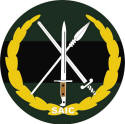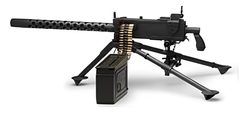This article has multiple issues. Please help improve it or discuss these issues on the talk page . (Learn how and when to remove these messages)
|
| South African Army Infantry Formation | |
|---|---|
 SANDF Infantry Formation badge | |
| Country | |
| Branch | |
| Type | Infantry |
| Motto(s) | Gladium Practamus (Wielders of the Sword) |
| Colors | Green and black |
| Commanders | |
| Notable commanders | Lieutenant General Rudzani Maphwanya [1] |
| Insignia | |
| Collar Badge | Springbok head |
| Beret Colour | Green (motorised, mechanised, airborne, seaborne and light infantry) Maroon (parachute infantry) |
| Company level Insignia |  |
| SA Mechanised Infantry beret bar circa 1992 |  |
| SA Motorised Infantry beret bar circa 1992 |  |
| SA Infantry beret bar circa 1980 |  |
The South African Army Infantry Formation supervises all infantry within the South African Army.
Contents
- History
- Origins: Union Defence Force
- Republic Defence Force (SADF)
- National Defence Force (SANDF) post 1994
- From Corps to Formation
- Formation structure and units
- Infantry Types
- Type 1: Parachute Infantry
- Type 2: Air Assault Infantry
- Type 3: Seaborne Infantry
- Type 4: Light Infantry
- Type 5: Mechanised Infantry
- Type 6: Motorised Infantry
- Infantry Battalion internal organization
- Training
- Equipment
- Alliances
- Battle Honours
- Notes
- References






























